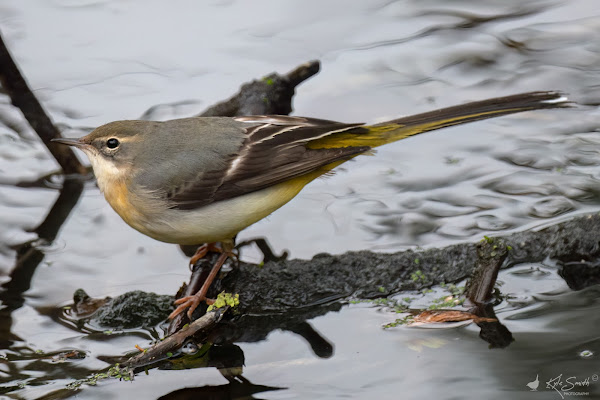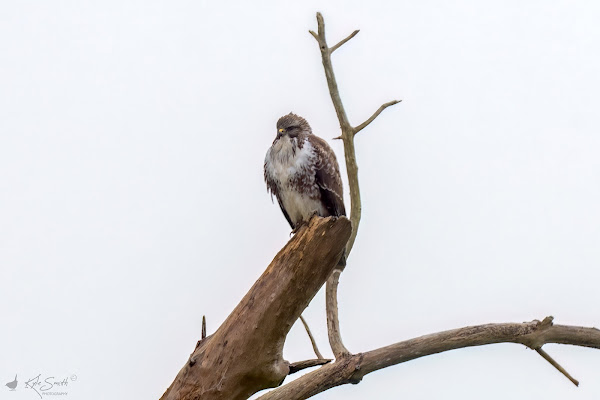With temperatures forecast to stay below 0°C on Saturday (even during the day), and a persistent covering of fog to envelope much of England, Kev @kev07713 and I decided to go out birding, but to stay local. We hadn't visited Abingdon since the Pallas's warbler in January 2022 and a ring ouzel later in April 2022 - we liked the site - pools and damp grassland on one side, and wooded areas and hedges on the other.
The area has been producing sand and gravel for almost 40 years and much of the wider site is now restored with some other areas undergoing restoration. Two overhead electricity transmission lines cross the site. Original planning for the area was for restoration to agriculture but instead planning allowed for restoration to allow for the establishment of a damp grassland habitat with a nature conservation afteruse - proposed because the hydrology of the area had changed, creating an area that had greater biodiversity value.
We walked down the lane and encountered first a few, and then so many more chiffchaffs. We'd noticed how many there were when we visited almost two years ago now, but hadn't thought we'd see as many this time and especially in these foggy and dank conditions. In these cold conditions they fed frenetically along the hedgerows in groups of two to half a dozen at a time.
Most of the UK’s chiffchaffs are summer migrants, breeding here before flying to warmer climes in autumn, flying all the way to sub-Saharan Africa to overwinter. However, an increasing number of birds are now staying in the UK all year round. It’s thought this is due to the country’s warming climate, which means the birds can survive the winter here. Although most UK warblers are breeding migrants, four species can be found here during winter. Two of these are resident species, the Dartford and Cetti's warblers - the other two are the blackcap, and the chiffchaff.
Chiffchaffs are insectivorous all year round, so they can't rely on garden feeding like blackcaps during winter. Overwintering suitable habitats include sheltered coastal areas, but they also use urban and suburban sites, especially near water, sewage treatment plants (where warmer water means an abundance of insects), woodlands and hedgerows.
Amongst the chiffchaff were handfuls of goldcrests, also feeding frenetically and working the trees, hedges and scrub to find insects on the leaves and stalks. Not much chance of feeding on the wing here.
The goldcrest is our smallest bird species, but what it lacks in size it makes up for in colour. Goldcrests are named after the crest of bright feathers in the middle of their head. This is completely yellow on females but has an orange centre on males. The rest of the plumage is mainly green-brown.
Adults typically weigh just 5g, which is the same as a 20p coin. On average, goldcrests are slightly lighter than the similarly diminutive, and closely related, firecrest. The UK has a large population of breeding goldcrests that stay here all year round. However, the population is often boosted in winter by individuals that migrate from Scandinavia. Kev had seen numbers (in the hundreds) come off the sea when birding in Spurn earlier in the Autumn.
We walked further along the path and at the top by a right turn and a gate allowing entrance into fields we came across Tom Wikens - we exchanged sightings and noted the sudden increase in winter thrushes feeding along these hedgerows. We expressed our surprise at his attire as he was in shorts, much as the photos posted on the groups during the summer (July) when he had found a night heron at the southern end of the lane, by Abingdon.
We scanned the ducks on the water to our left noting shoveler, wigeon, teal, mallards, and gadwall. We'd hoped to pick out some snipe on the damp grassland and water margin but nothing doing. Eventually Tom found that standing still wasn't a good plan in his attire and bid us farewell. As we walked back down the path we had some lovely views of the winter thrushes, the redwing being more likely to continue feeding as we passed.
We heard a call from snipe and I picked one out as it spun out and over the hedge, then down the lane - there was another call but no view. Continuing down the path we started seeing chiffchaff, goldcrests and a grey wagtail, in the hedge line and ditch. They continued to show and feed and we spent quite a while watching them and hoping that we might find another species in amongst the tits, chiffchaff and goldcrests - but not.
On a tree on the edge of a ditch filled with water sat a rather unhappy looking buzzard. It occasionally flew from a prominent perch to the centre of a large tree but soon returned. It showed no signs of leaving and feeding, seemed happy just to watch and wait.
Finally we heard and then saw a couple of cetti's warblers chasing one another, landing on the tree just ahead. Thet skirted around quickly with one departing and flying along the hedgerow down the lane. The other stayed for another 30 seconds but remained out of shot for a decent photo. It then left and returned from whence it had come, to trees out in the field and out of reach.
As we stood by the edge of the playing fields we were approached by a chap - we must have looked as if we were up to no good - he was the Chairman of the Football Club. We had been watching as a handful of people drilled holes in the ground and he explained to us that they were trying to improve the drainage on a section of the field as it was very prone to standing water - to prevent anyone falling into the holes they were back-filling with sand. There certainly has been a lot of water of late and it was obvious that the water was still sitting on top of the grass. A crack team on a cold day.
We finally bumped into Tom again as we were almost back to the car and he relayed sightings of mandarin and goosander on the Thames. We then spotted siskins in the treetops, perhaps ten. We decided to call it a day and made for home – a nice day out without the pressure of finding a ‘target’ bird.
Year List: 278









Quality mate
ReplyDeleteThanks Nick. Trying to up my game to close the gap to your entries.
Delete